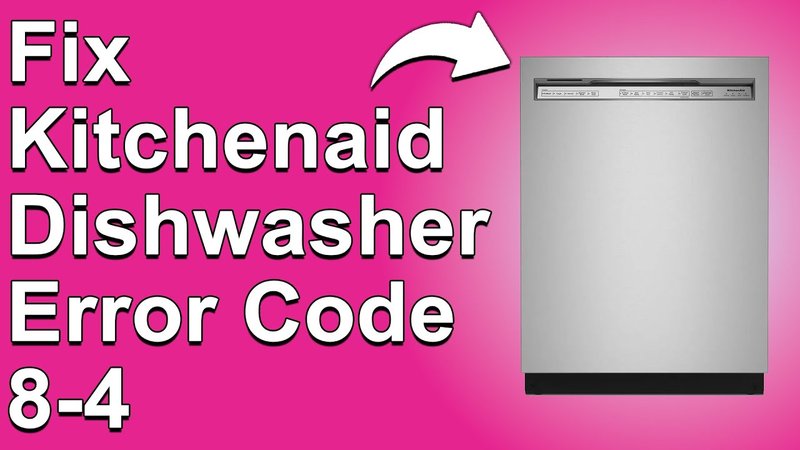
Think of it as a car’s check engine light. Just like you wouldn’t (or shouldn’t) ignore that light on a long road trip, the “F1” error is your cue to pay attention. This isn’t just a minor hiccup; ignoring it could lead to bigger headaches down the road. But what exactly are the implications if you decide to skip fixing the error? Let’s explore that further.
Understanding the F1 Error Code
You might be wondering, “What exactly does this F1 error entail?” Simply put, the F1 error code is the dishwasher’s way of alerting you to a water heating problem. Imagine if you’re trying to take a warm shower, but the heater suddenly decides to do its own thing. Not fun, right? Similarly, your dishwasher needs to maintain a certain temperature to effectively clean your dishes, and the F1 code indicates this isn’t happening.
The root of this issue could stem from a malfunctioning heating element or a faulty thermostat. It’s akin to a thermostat in your home going haywire and either blasting too much heat or not enough. In a dishwasher, this malfunction can prevent water from reaching the optimal temperature needed for sanitizing and cleaning, leaving your dishes less than sparkling.
If left unaddressed, this technical glitch can lead to reduced cleaning efficiency. Imagine having to run a second cycle because your glasses are still spotted, or your plates have stubborn food residues. Frustrating, isn’t it? Addressing the problem head-on can save you from these inconveniences.
Consequences of Ignoring the Error
Now, let’s talk about what happens if you ignore this persistent error. You might be tempted to work around it for a while; after all, who has time for repairs? But ignoring it is like trying to ignore the increasing noise from a squeaky door—it usually gets worse, not better.
Firstly, your dishwasher will likely start consuming more energy. Without efficient water heating, it has to work harder, drawing more power to try and achieve the same results. This can hike up your electricity bills, hitting your wallet where it hurts. Plus, running multiple cycles to get dishes clean also contributes to unnecessary water wastage.
Moreover, a persistent F1 error can lead to long-term damage to your appliance. Much like wear and tear on a car engine due to an unchecked oil light, continual operation under these conditions can strain critical components of your dishwasher, potentially leading to a complete breakdown. Repair costs for comprehensive failures can be much steeper compared to addressing the issue early on.
How to Address the F1 Error
So, what’s the best course of action? The first step is to consult your dishwasher’s manual or the KitchenAid customer service for guidance specific to your model. They often provide troubleshooting steps that might just involve resetting the machine.
If you’re a bit adventurous and handy with tools, you could try checking the heating element for visible damage or continuity using a multimeter. However, if this sounds intimidating or out of your comfort zone, it’s perfectly fine. Hire a professional appliance repair technician to take a look. Sometimes, having an expert handle the situation saves time, stress, and money in the long run.
Once the issue is resolved, keep an eye on your dishwasher’s performance. Regular maintenance like cleaning filters and checking the water supply can prevent future errors. Think of it as a small investment into prolonging the life and efficiency of your appliance.
Preventative Tips to Avoid Future Errors
Consider this: just as regular oil changes keep a car running smoothly, regular maintenance of your dishwasher can prevent future mishaps. Start with the basics—clean your dishwasher’s filter and spray arms regularly. Debris build-up can mimic bigger problems and trigger error codes.
Using a dishwasher cleaner once a month can also help maintain its internal health, much like popping a multivitamin to keep your body in tune. Periodically check the water inlet hose to ensure it isn’t kinked or clogged, as this can impact water flow, leading to temperature issues.
Lastly, be mindful of not overloading your dishwasher. While it might be tempting to squeeze in that extra plate, overcrowding can block water and detergent distribution, straining the appliance.
In the end, addressing an F1 error promptly and maintaining good appliance hygiene can keep your dishwasher running smoothly for years. While it may seem daunting, knowing when and how to react can save you from bigger headaches and expenses.